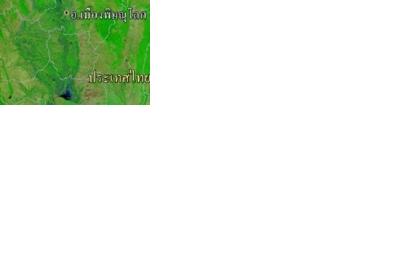Thailand has invested in the concept of the sensor web, creating an interoperable environment for a diverse set of satellite and ground sensors with connectivity to the Internet in order to better understand physical phenomena. The country has deployed a forest fire sensor web and flood sensor web, in addition to the ability to tap observations from its citizens. These initiatives are tightly coupled with technology and services provided by NASA's Jet Propulsion Laboratory, where sensor web development and deployment have been underway for years. The NASA Jet Propulsion Lab's vision for the Sensor Web aims to better understand physical phenomena, such as volcanic eruptions, fires and floods. The vison centers on the flexibility to connect to sensors to compile custom data and observations that can be delivered by Web 2.0 tools. The end goal is to make discovery and access to sensors as easy as finding and using websites.
Thailand's Fire SensorWeb monitors the current state of the forest in terms of fire risk, active fires, progression of fires, and the location of smoke plumes. The system uses the NASA MODIS-based FIRMS satellite sensing system to trigger Earth Observing One / Advanced Land Imager to acquire more detailed imagery. The imagery is then expertly analyzed to produce products such as fire maps as well as sending alerts to stakeholder groups. The Fire SensorWeb was active in the 2011 forest fire season, tracking and monitoring fires in Thailand. There is ongoing work to integrate additional satellite systems, generate smoke products from satellite data, and to better integrate patrol, aircraft, and fire tower information.
The frequent flooding in the monsoon season in Thailand makes the Flood SensorWeb a valuable input for property, agriculture, and public safety. Similar to the Fire SensorWeb, the Flood SensorWeb includes MODIS observations along with RADARSAT radar data that can cut through the clouds to image the extend of flooding. Weather satellite information and in-situ weather and river gauging information are also inputs to track flooding via river basin and sub-basin hydrological models. Increasingly, these sensor hardware and software systems are being extended to the public to inform as well as to gather citizen observations. ThaiFlood provides an interactive web presence with details on current conditions as well as a means to provide feedback. In addition, the Thai Citizen Observation Program (TCOP) is working to install a network of weather stations that expand and add to the people network.
The SensorWeb approach has proven to be an effective approach to monitor and communicate the physical world. We can expect this concept to expand to broader regions as the technology matures, and as successful warnings prove the value of these systems.

